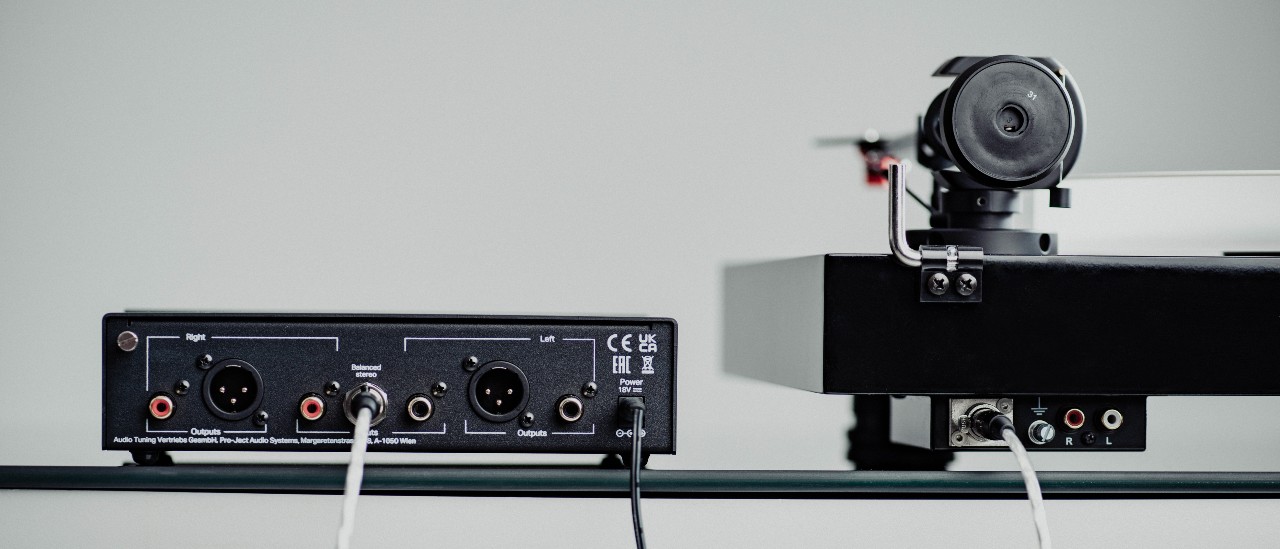What Hi-Fi? Verdict
A duo that allows you to take advantage of the many advantages of balanced connections all the way from the phono cartridge to amplifier
Pros
- +
Balanced end-to-end
- +
Outstanding sound
- +
Superior adjustability
Cons
- -
Different plug-pack voltages
Why you can trust What Hi-Fi?
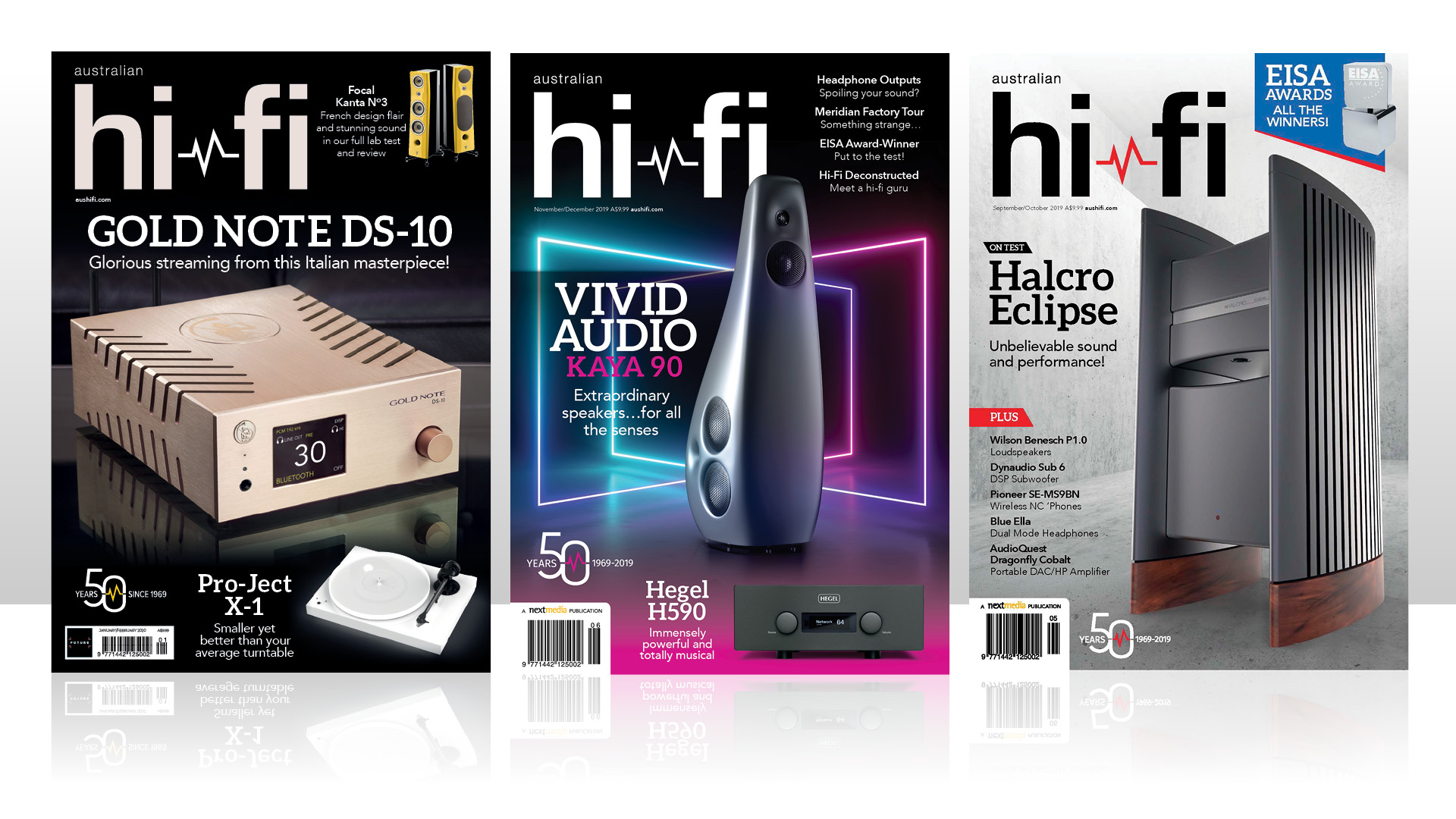
This review and test originally appeared in Australian Hi-Fi magazine, one of What Hi-Fi?’s sister titles from Down Under. Click here for more information about Australian Hi-Fi, including links to buy individual digital editions and details on how best to subscribe.
Although there is much debate over the origin of the phrase “last laugh”, it is a fact that the earliest recorded version of the various expressions that use it is found in the 1607 play ‘The Christmas Prince’ where one of the characters has the line, “He laugheth best that laugheth to the end”.
A modern-day character who is certainly laughing very loudly is Heinz Lichtenegger. When he first started building Pro-Ject turntables in 1991, at a time when CDs and their players were in ascendency, he was told by all and sundry that his new project was madness because vinyl was dead. Lichtenegger disagreed, believing that turntables would make a comeback if they were built correctly.
Three decades later, Lichtenegger is having the last laugh – not only were all the pundits wrong, but Pro-Ject now sells more turntables than any other single turntable manufacturer on the planet and also has more turntable models available for sale than any other turntable manufacturer ever had at any single point in its history… and that statistic includes the most famous names in turntable manufacture, such as the legendary Thorens (which Lichtenegger also now owns, along with Musical Fidelity).
Pro-Ject’s new X2 B turntable is based on the original X2 model that was released several years ago. The ‘B’ is the most significant difference between the two. The X2 had only RCA outputs where the left and right channels connect to the phono preamplifier via RCA cables. In such an arrangement, the left and right channels have one ‘positive’ wire and one ‘negative’ wire, though the two negatives are joined together so, effectively, there are only three connections: two ‘positive’ wires (one for each channel) and a single ‘negative’ wire that is shared between the two channels.
The X2 B has a special five-pin XLR connector whose five pins keep all the different signals separate: separate positive and negative wires for each of the two stereo channels, and a fifth connector for the ‘earth’ connection.
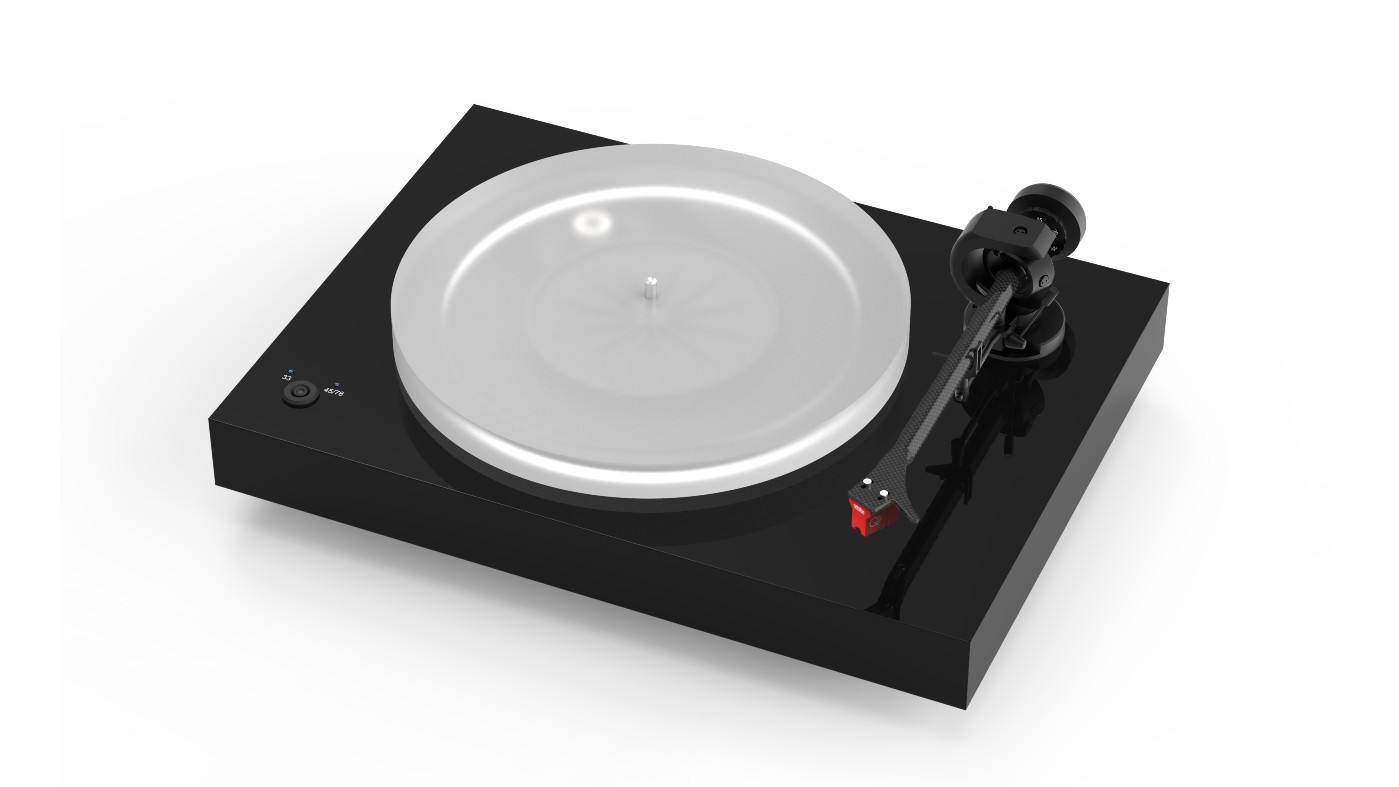
Design
Apart from the wiring, the X2 B is otherwise a standard belt-drive turntable, although when I say ‘standard’, I mean that it is built to the same high standard we have come to expect from Pro-Ject products over the last three decades.
It also isn’t quite ‘standard’ in that, in addition to the two speeds you’d expect to find on any modern turntable – 33.33 and 45rpm – the X2 B also offers the fairly unusual 78rpm speed. However, while you can easily switch between the typical 33.33 and 45rpm speeds using the press-button on the fascia of the turntable, you’ll have to partially disassemble the turntable to change the rubber drive belt in order to use the 78rpm speed.
And I really do mean change the rubber belt drive, because Pro-Ject supplies two different belts in the box. There’s a flat belt for the 33 and 45rpm speeds that runs around a drive pulley that is 16mm in diameter, and a second, round belt for 45 and 78 rpm speeds that runs around a pulley that is 30mm in diameter.
The drive pulley is made from aluminium – a much more robust material than the plastic pulley that’s mostly used for this purpose! – and fitted directly to the shaft of the drive motor. The motor itself is suspended in mid-air by a clever but rather Heath Robinson-like rubber band arrangement that isolates it from the plinth to prevent motor vibrations from affecting the sound quality.
This drive pulley and belt together drive a sub-platter on which sits a massively thick (30mm) acrylic platter that weighs 2kg. The mass of this platter helps to stabilise rotational speed to reduce wow and flutter, while its acrylic material means you will not get the unwanted resonances you hear from platters that are made of metal (either solid or alloyed). The surface of the acrylic is quite slippery, so in combination with the supplied felt/fibre platter mat, you can ‘slip-start’ your albums if you want to.
For this review I was provided with an advance sample of the X2 B that showed signs of a somewhat hasty production process, such as the 33/45/78 lettering on the plinth being a little lop-sided, with some small specks of paint missing. Also, the tonearm did not have the peg for the counterweight installed and, since the information on how to install it isn’t included with the instructions, I had to assume its position from looking at photographs. Finally, the counterweight was not supplied with the all-essential counterweight string, so I had to borrow one from one of my own turntables in order to get the X2 B up and running.
The reason for the hasty production was to ensure that Australian Hi-Fi magazine had an opportunity to review the Pro-Ject X2 B before the deadline for the judging for the 2022–2023 EISA Awards, as members of this publication are on the judging panel. I guess at this point I should say that Pro-Ject’s X2 B and Phono Box S3 B, which are together the subject of this review, were jointly judged ‘Best Product 2022–2023 Vinyl System’ by the expert reviewers of over 60 publications from 29 different countries who sit on the EISA Awards panel.
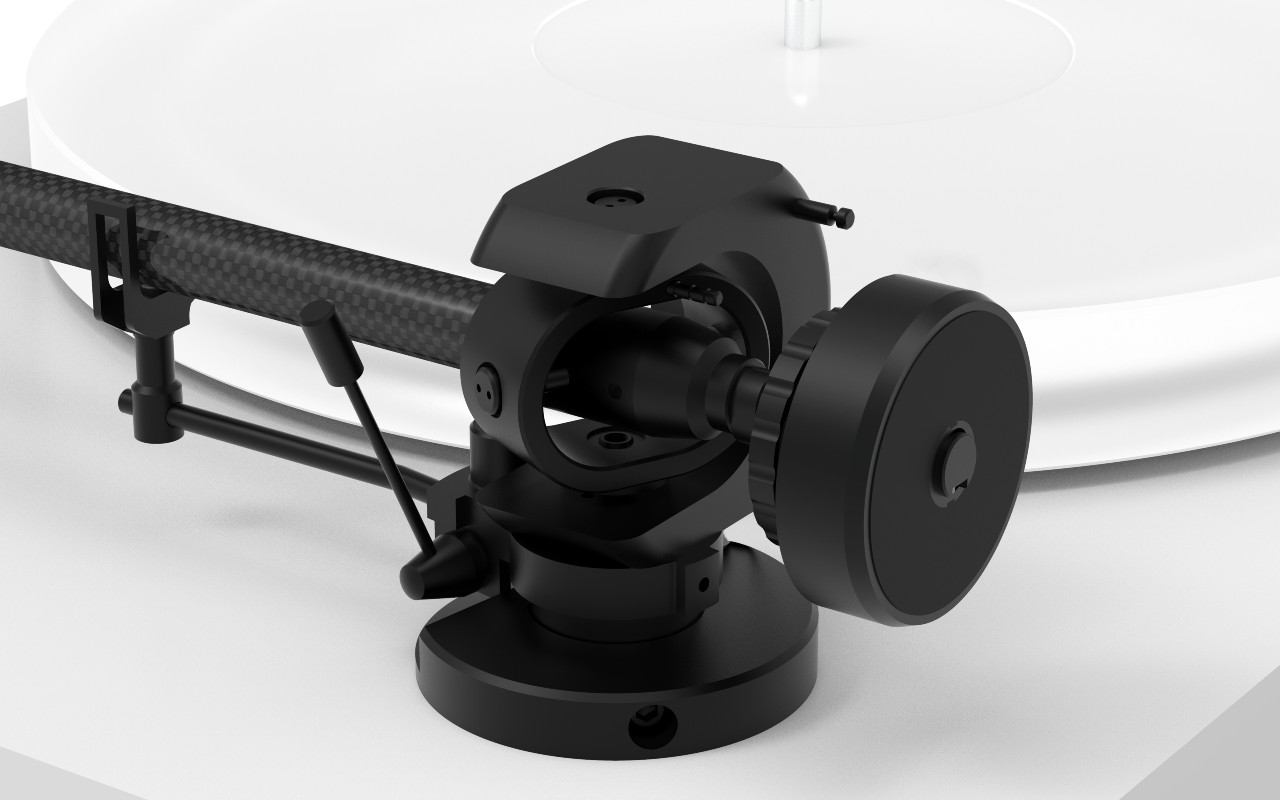
Needless to say (but I’ll say it anyway), all the Pro-Ject X2 B models that are now available in stores are supplied with absolutely everything you need to get the turntable up and running!
The X2 B uses a 9-inch (230mm effective length) tonearm made of both carbon and aluminium. According to Pro-Ject, the carbon is to give the tonearm its necessary rigidity, while the aluminium is chosen for damping. Unlike many tonearms, it does not have a removable headshell, making it difficult to swap between different phono cartridges, but Pro-Ject claims that this one-piece design “avoids vibrations caused by detachable headshells”.
Why might you want to swap between different phono cartridges anyway? One perfect example of why you might concerns the very cartridge that Pro-Ject supplies pre-fitted to the X2 B. It’s the excellent Ortofon Quintet Red moving-coil cartridge which Ortofon says is “an all-purpose cartridge that delivers open, dynamic sound with a slight touch of warmth”. But it’s the entry-level (£269 / $359 / AU$499 if purchased separately) model in a range that includes the Quintet Blue at £389 / $479 / AU$769 (which, according to the company, “adds more dynamics and resolution, sounds more open and reproduces more details”), the Quintet Bronze at £545 / $719 / AU$1099 (which “adds even more details and resolution but in a very evenhanded way that pays respect to all elements”), and the Quintet Black S at £725 / $999 / AU$1489 (“the best of everything, true to the groove with resolution and accurate insight into each recording”). There’s also a Quintet Mono (£389 / $503 / AU$719), which – you guessed it – is a true mono cartridge exclusively for playing mono microgroove vinyl records.
As for the reason Pro-Ject has pre-fitted the X2 B with a moving-coil cartridge rather than a moving-magnet cartridge, it is because all moving-coil cartridges have ‘balanced’ outputs, whereas the output of almost all moving-magnet cartridges is unbalanced as the ‘negative’ side of their two internal coils are tied to ground (earth).
Of this balanced connection technique, Pro-Ject says that it “does a better job than an RCA cable at removing the noise or ‘electrosmog’ that wireless networks and electronic devices create. This noise can be easily picked up and amplified when using a standard phono cable where a single wire carries the audio signal. Whereas in a balanced connection, the signal travels down two cores, one of which is inverted, and, when recombined, cancels out unwanted interference for improved signal-to-noise ratio.”
My review sample of the Pro-Ject X2 B came with the company’s premium walnut wood veneer, but three other painted finish options are available – a luxurious black, eight-layer, high gloss finish, and an eight-layer, hand-polished, satin paint finish in either black or white.
Phono Box S3 B
Pro-Ject proudly claims that its Phono Box S3 B is ‘Made in the EU’ and ‘Made in Europe’, which indeed it is. Far more interesting, however, is the badge on the back of the Phono Box S3 B that says ‘Made in Slovakia’. This is not quite accurate as the name of the country is actually ‘Republic of Slovakia’, but either way you may be interested to know that per capita Slovakia produces more motor vehicles than any other country in the world. And not just any motor vehicles either. It makes Porsche Cayennes and Coupes, Audi Q7s and Q8s, and Peugeot e208s, along with models for Seat and Skoda. All up, automotive production represents nearly 14 per cent of Slovakia’s GDP and almost half of the country’s industrial production (and industrial exports).
Just as the Pro-Ject X2 B is an evolution of a previous model in the company’s range, the Phono Box S3 B is as well, its predecessor being the Phono Box S3. However, the new version has a larger case than the older one, plus more features and, of course, balanced inputs and balanced outputs in addition to the usual unbalanced ones.
As you should be able to see from the accompanying image of the Phono Box S3 B on the pages before and previous, you can adjust the S3 B’s input impedance, capacitance and gain on the front panel to best suit whatever phono cartridge you are using. I personally think it was unnecessary to include the word ‘Loading’ before the ‘Ohms’ and ‘pF’ markings, but maybe that’s just me. That gripe aside, there are five different settings for input impedance (10 ohms, 50 ohms, 100 ohms, 1k ohms and 47k ohms) and four different settings for load capacitance (50pF, 150pF, 300pF and 400pF). There are four different settings for gain too: 40dB, 45dB, 60dB and 65dB.
Impedance, capacitance and gain settings are all selected electronically, via the small push-buttons at the right end of the front panel, and your selected setting is indicated by a small red LED. These buttons actually operate small relays that do the actual switching, so there’s a bit of a time lag when you are switching from one to the other. It’s only about one second for impedance and capacitance, but it’s a full four seconds when switching gain.

Rather cleverly, you can use different impedance, gain and capacitance settings for each of the S3 B’s two available inputs – balanced (XLR) and unbalanced (RCA). The unit itself will remember the different settings and apply them appropriately whenever you use the front panel push-button to select one or the other of the two.
Below the ‘Input’ button is a button labelled ‘Subsonic’ which, if pressed, will insert a low-frequency filter into the signal path to remove unwanted infra-sonic noise. The source of this noise could be turntable rumble (if you’re using a turntable that isn’t the Pro-Ject X2 B!) or it could be low-frequency noise accidentally recorded on the LP you’re playing (Decca was infamous for including the sound of trains on its albums because one of its studios was unfortunately close to one of the underground train lines), but the circuit is also handy for removing unwanted intermodulation effects caused by playing warped records. Given the usefulness of this circuit, it would’ve been nice for it to have been correctly labelled. As the meaning of the word ‘subsonic’ is technically ‘below the speed of sound’, ‘Infrasonic’, ‘Low Filter’ or, best of all, ‘HPF’ (High Pass Filter) would all have been better choices to identify this button.
Pro-Ject says that the gain stage of the new Phono Box S3 B uses a fully discrete layout and that “the amplifier section is built out of single components and doesn‘t use any integrated circuits”. It appears, however, that Pro-Ject does not count op-amps as ‘integrated circuits’ because it uses these in both the balanced and single-ended input stages. Pro-Ject uses what it calls a ‘semi-passive’ stage to apply RIAA equalisation. “By keeping the gain stage fully symmetrical, we can optimize the signal-to-noise ratios and keep interference to a minimum, giving the EQ section the best source to work its magic,” it says.
The rear panel of the Phono Box S3 B has the necessary unbalanced inputs (via RCA), as well as a balanced stereo input (via 5-pin mini-XLR connector). It also has unbalanced outputs (via RCA) and balanced outputs (via two standard full-sized three-pin XLR connectors). While it may seem that using full-sized XLR terminals for the inputs, rather than the mini-XLR connector, would have been a better idea, I personally think the mini connector was the best choice — not least because the X2 B turntable uses a mini-XLR connector out of necessity due to the limited space available on its output panel.
The remaining two facilities on the rear panel are a ground terminal, which could be necessary to reduce mains hum if you are using the unbalanced connections, and an 18V DC power socket, revealing that the Phono Box S3 B’s power is supplied by an external plug-pack power supply (rated at 500mA). The Pro-Ject X2 B is also powered by an external plug pack, but it’s a different voltage (15V DC) so you will need to be sure not to confuse the two and accidentally connect the wrong one! It would probably have been better if both models had used the same operating voltage.
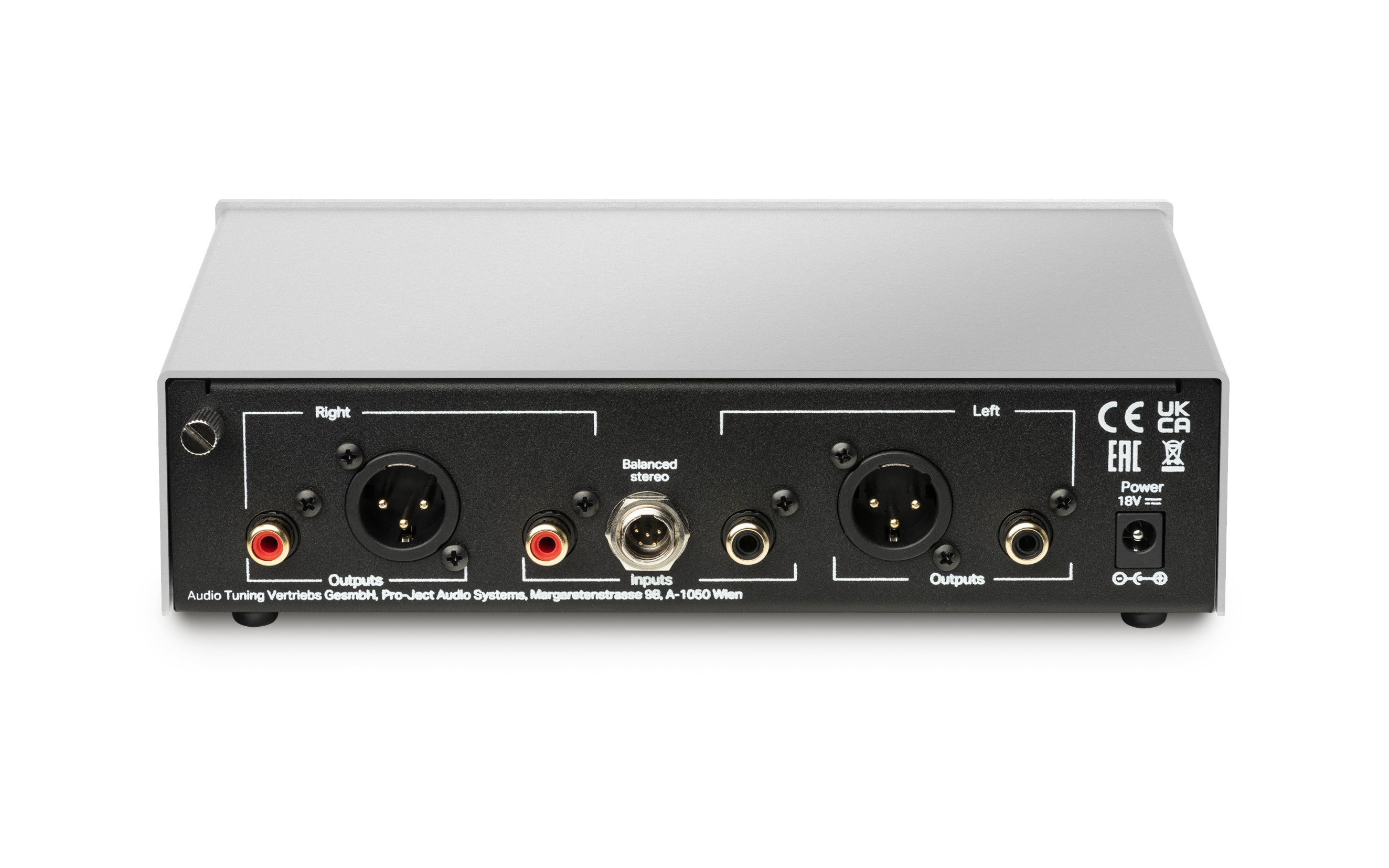
Set-up
Setting up the Pro-Ject X2 B was straightforward and I was really pleased to find that you can easily adjust the tonearm to ensure both accurate azimuth and accurate vertical tracking angle (VTA) settings. Somewhat strangely, despite the fact the arm has the usual counterweight adjustment system for stylus downforce, I found it rather difficult to achieve the zero balance of the arm that’s necessary to set the downforce by rotating the counterweight. Because of this, I would suggest setting downforce using a stylus downforce gauge instead – either the small static one included with the turntable or an optionally available static or electronic one.
Despite those azimuth and VTA adjustments, you will not have to adjust these, or indeed the all essential angular cartridge alignment, because Pro-Ject has already done all this for you at its factory in Slovakia. However, it might be worth making some small marks on the headshell to note the exact position of the cartridge as, like all moving-coil cartridges, you are going to have to remove it when the stylus needs replacing, and if you have marks you will be able to reinstall the cartridge without the need for a cartridge alignment gauge. (And in the event you do need to buy a gauge, the absolutely excellent Pro-Ject Align-It cartridge alignment gauge carries a £105 / $159 / AU$399 RRP.)
Unlike moving-magnet cartridges, when the diamond stylus of a moving-coil cartridge becomes worn or damaged, you either have to a) have a new stylus fitted to your existing cartridge, or b) replace the entire cartridge. To have a specialist cartridge repair firm, such as Garrott Bros, replace the stylus on the Quintet Red will cost between $200 and $400 depending on the stylus profile you request (Elliptical, Shibata, Micro-Tracer etc).
I was also very pleased to discover that the tonearm latches to its rest magnetically, rather than just resting on it. This means there is no chance of the arm being accidentally bumped off the rest and potentially damaging your phono cartridge. The heavy bit of the magnetic system (the magnet) is on the rest; the light part of the magnetic system (a small steel disc) is attached to the tonearm.
The Pro-Ject X2 B’s platter speed always defaults to 33.33rpm whenever you turn it on, no matter what speed you were using when it was turned off. When you press the speed button to switch speeds, the LED on the button which normally glows continuously will flash for two seconds before resuming its continuous glow. Initially, I thought that this indicated that the platter had reached the correct speed, but the flashing is simply to indicate that you’ve pressed the button.
Obviously, you do have to set the Phono Box S3 B’s input impedance and gain to best suit the electrical characteristics of the Ortofon Quintet Red cartridge. (You don’t need to set capacitance for a low-output moving-coil cartridge — only when using moving-magnet cartridge or a high-output moving-coil cartridge.) Ortofon specifies the internal DC resistance of the Quintet Red at 7 ohms and recommends a load impedance of 20 ohms or more, so I used the closest available setting on the Pro-Ject S3 B — 50 ohms. As for gain, because the Quintet Red is a low-output moving-coil design, with an output of only 0.5mV (at 1kHz re a recorded velocity of 5cm/sec), I used the 60dB gain setting, but the general rule for correct gain is to use the lowest gain setting that is practical for whatever cartridge you’re using, as this will ensure the lowest noise from the Phono Box S3 B.
If you were using, say, a standard high-output moving-magnet cartridge (which you could, though that would kind of defeat the purpose of owning the X 2 B and the S3 B in the first place), you would use a load impedance of 47k ohms, a load capacitance of 147pF and a gain of 40dB.
With Pro-Ject talking up the benefits of balanced circuitry, and justifiably so, it’s pretty easy to overlook the fact that it’s actually just the icing on the cake, and if the cake itself isn’t tasty, then the best icing in the world isn’t going to compensate. By this I mean that I needed to evaluate the basic operation of the Pro-Ject X2 B before considering anything else. And the good news is that it’s all good news; the Pro-Ject X2 B is an outstandingly good turntable.
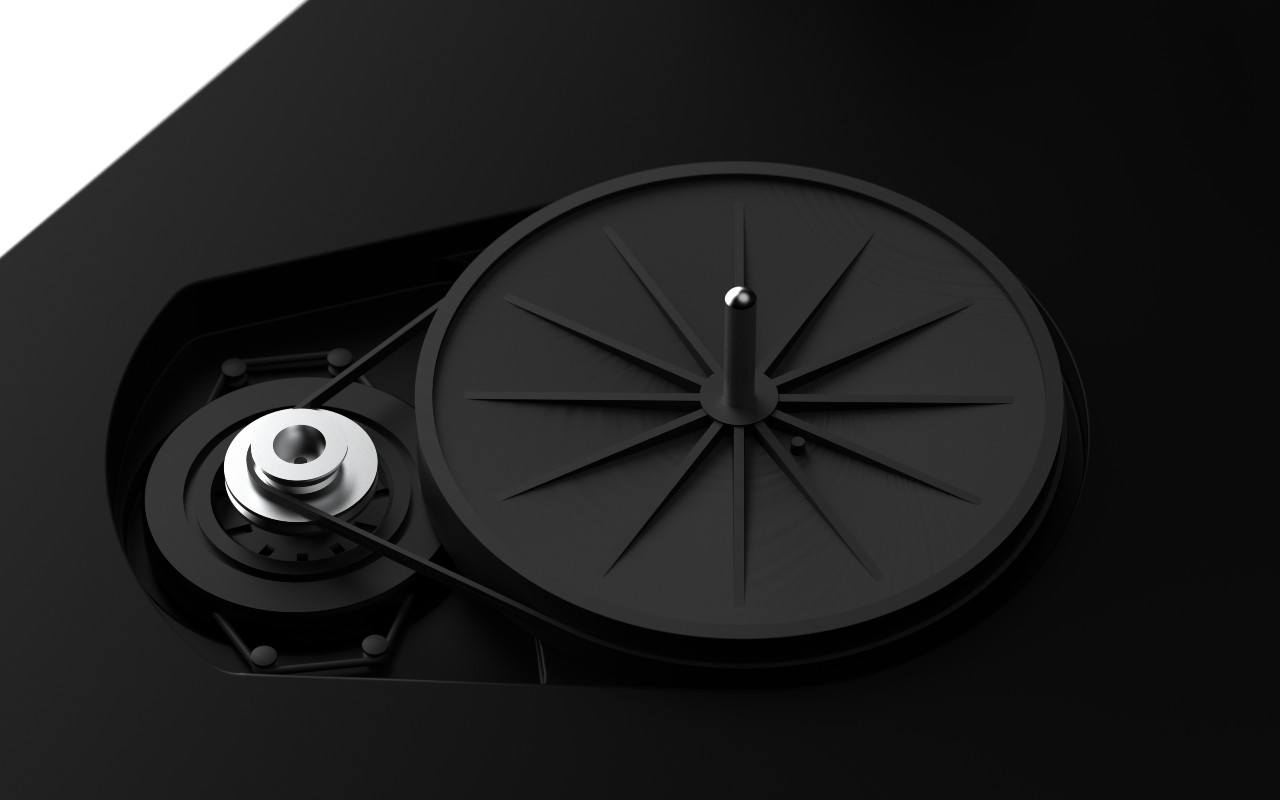
Performance
Platter speed, which I checked with my strobe was spot-on, being essentially perfect at 33.33rpm and only fractionally fast at 45rpm, so that not even someone with perfect pitch (which I certainly do not possess!) would be able to pick up the difference. I did not check the 78rpm speed – not least because I no longer own any 78s – but given the accuracy of the other rotation speeds I would reasonably assume that it too would be accurate.
To evaluate a turntable’s wow and flutter, I have amassed a dozen or so albums over the years that will reveal both, including Liszt’s 'Légende No 1 St François d’Assise', Satie’s 'Gymnopédies', Chopin’s 'Nocturne Op.27 No.1' and John Field’s 'Nocturne No.10 in E minor'. All of these will instantly reveal any deficiencies in a platter’s rotational accuracy, but very notably they are also enjoyable to listen to simply because they’re outstandingly good musical compositions.
If you’re a fan of Erik Satie, I need to say that if you do not already have it, you should obtain one of my favourite LPs of his works, one recorded by Dutch pianist Jeroen van Veen in two different versions, both of which are on a double-LP set pressed by Brilliant Classics titled ‘Erik Satie Slow Music: Gymnopedies, Gnossiennes and Other Works’. Van Veen achieves a sublime perfection that eludes most pianists. I suspect his success might be because he is not only also a composer but also considered by many experts to be one of the leading exponents of minimalism in the world today. These traits, along with him being a great pianist, are obviously what is required to make the music work! He certainly stretches the concept of slowness to the extreme on this set. One critic wrote of it that: “he creates an hallucinatory effect, a kind of minimal music avant la lettre.”
However, to cut to the chase, although I played all the previously mentioned albums on the Pro-Ject X 2 B, I did not hear any wowing or fluttering – the sound was rock-stable.
As for low-frequency noise (aka rumble), the fact that the Phono Box S3 B has a low-frequency filter makes it very easy to evaluate this, because it was simply a matter of switching the filter in and out and seeing if you can hear a difference in sound between the two settings. If you can, it would mean that the X 2 B was generating some low-frequency noise. When I tried this, I could hear absolutely no difference between the two settings, so there wasn’t any low-frequency noise to cut out in the first place.
Given the speed accuracy and the lack of wow or flutter or background noise, it was hardly any surprise at all that this Pro-Ject duo performed beautifully with every one of the dozens of LPs I played during the course of preparing this review, not only making easy work of reproducing the music on jazz LPs and others with recordings of small groups, but also when playing LPs of large-scale orchestral works, with the Ortofon Quintet Red and the Pro-Ject tonearm handling even the most complex groove walls with ease – even when there were crescendos in the inner grooves, close to the LP label.
Stereo separation was excellent and stereo imaging was beautifully fixed in space. I was particularly impressed with the delivery of ‘Dark Side of the Moon’. It clearly sounded better than the version I have on CD. I was even more impressed by the Pro-Jects’ performance with an old and very worn 1970 CBS pressing of Beethoven Sonatas (Moonlight, Appassionata, Pathétique) as performed by Glenn Gould. As with all his recordings, the sound of the piano is incredibly realistic – at least, it is if you are listening as a pianist as opposed to someone sitting in the audience.
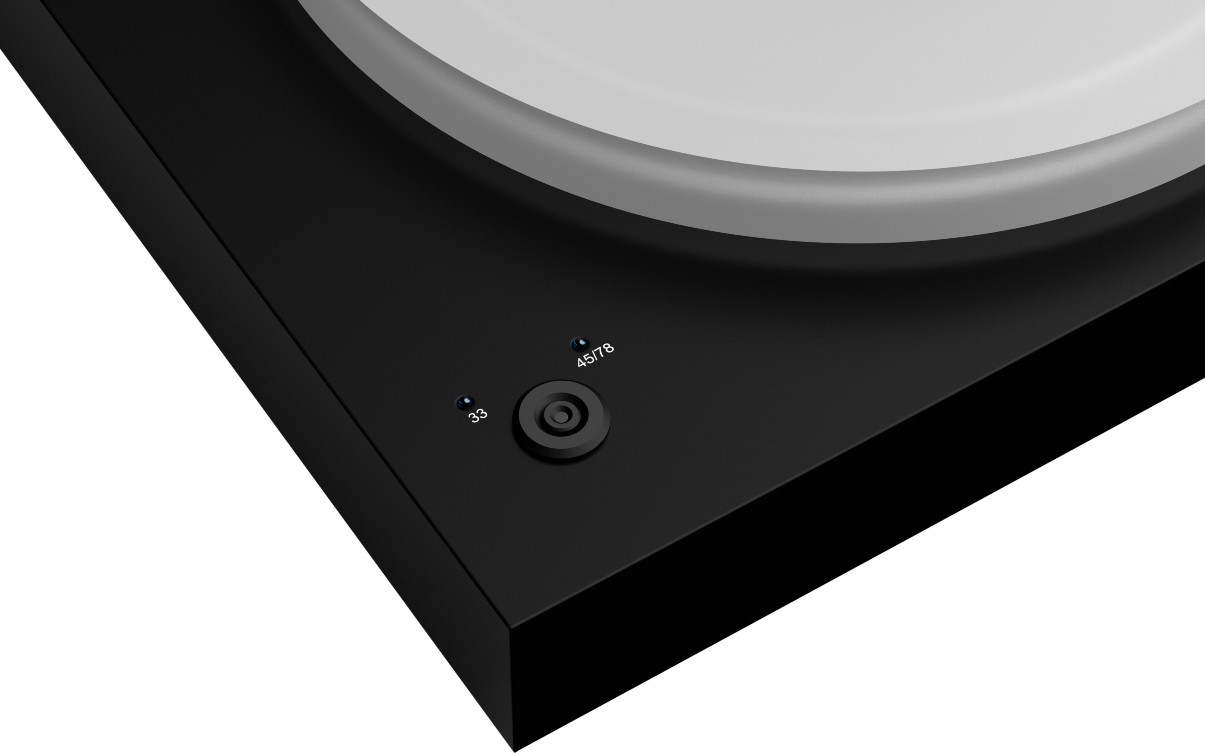
I first checked performance at 45rpm with a Denon Reference Master recording of a solo harpsichord, and the result was truly stunning. There was phenomenal crispness and detail to the sound of the harpsichord. One of the more recent 45rpm pressings I used during my review was a fairly recent purchase to replace a much older 33rpm one – the Mobile Fidelity UltraDisc double LP of ‘Still Crazy After All These Years’, one of my favourite Paul Simon albums. The title track and 50 Ways to Leave Your Lover are two of the best tunes he ever wrote. (For the record, so to speak, ‘Hearts and Bones’ remains my favourite album of his, despite my very recent discovery that my most hated composer, Philip Glass, had a hand in one of the tracks.)
The way the combo reproduced the soft percussion underlying the vocal in the opening of the intro track was masterful, because the cymbal sound was immediately obvious, which it isn’t on lesser systems. The sound of Michael Brecker’s sax when he chimes in towards the end of the track is achingly beautiful and, pleasingly, was reproduced with perfect tonality by the Pro-Ject pair.
The sound of the piano that introduces My Little Town was delivered perfectly by the Pro-Jects too. You know it’s a real piano from the first instant, and the piano is about the most difficult instrument for any system to get right. The solidity of those deep, growly piano notes was almost visceral, as was the sound of the bass guitar when it joined in.
On the intro to 50 Ways, the Pro-Ject pair captured the background acoustic perfectly, so that I could hear the hollowness of it, which again is not captured on lesser systems. The syncopated percussion backing on this track is phenomenally good – not at all surprising given that it was supplied by Steve Gadd and Ralph McDonald – and the Pro-Jects got the rhythms and timings exactly.
Night Game proves Simon’s lyrical skill. After all, the concept of writing a song about a baseball pitcher dying mid-game would elude most lyricists. He proves his musical skill too by choosing Toots Thielemans to perform the harmonica solo. Kudos as well for choosing Phoebe Snow to join him on Gone at Last, and to the Pro-Ject pair for their timbral accuracy because you know it’s Snow from the moment she kicks off the second verse.
Verdict
If your main amplification has a balanced input, adding the Pro-Ject X2 B turntable and Pro-Ject Phono Box S3 B phono preamplifier to your system will mean you will for the first time be able to take advantage of the many advantages of balanced connections all the way from the phono cartridge to amplifier. Even with the benefit of hindsight, I can’t think why anyone hasn’t ever thought of this before. But it’s not just the fact that you’re able to enjoy balanced operation, it’s also the fact that with this duo you’re getting an outstanding moving-coil cartridge, an outstanding turntable and an outstanding phono stage. Tell me, what’s not to like?
MORE:
The best record players and best phono preamplifiers you can buy
The story behind Helix, the most accurate audio playback device today?
12 of the best Pro-Ject turntables of all time
Australian Hi-Fi is one of What Hi-Fi?’s sister titles from Down Under and Australia’s longest-running and most successful hi-fi magazines, having been in continuous publication since 1969. Now edited by What Hi-Fi?'s Becky Roberts, every issue is packed with authoritative reviews of hi-fi equipment ranging from portables to state-of-the-art audiophile systems (and everything in between), information on new product launches, and ‘how-to’ articles to help you get the best quality sound for your home. Click here for more information about Australian Hi-Fi, including links to buy individual digital editions and details on how best to subscribe.
